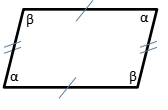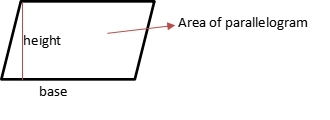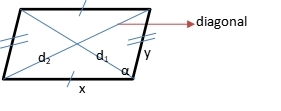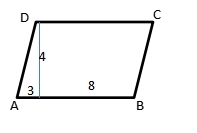Table of Contents
Definition of Parallelogram
Parallelogram is a two-dimensional shape that has parallel sides each other. The parallel sides are equals in length. Parallelogram is also a quadrilateral because it has four sides.

The angles are same in the opposite. The sum of adjacent angles is 180° (supplementary angles).
Sum of α + β = 180°
Area of a Parallelogram
Parallelogram has height, base, and oblique sides. Area of parallelogram is area that is bordered by parallel sides.

Area = height x base = h x b
Perimeter of a Parallelogram
Perimeter of parallelogram means sum of all sides of parallelogram.

Parameter = P = base + base + oblique side + oblique side = 2 (b + o)
Diagonal of a Parallelogram
Parallelogram has two diagonals. They bisect each other. There are some consequences because of the diagonals of parallelogram.

- A diagonal of parallelogram divides the parallelogram to be two congruent triangles.
- Two diagonals bisect each other in middle point.
- Two diagonals divide parallelogram to be two (pairs) of congruent triangles.
- Formula of any parallelogram is
d1 = √(x2 + y2 – 2xycosβ) = √(x2 + y2 + 2xycosα)
d2 = √(x2 + y2 – 2xycosα) = √(x2 + y2 + 2xycosβ)
Properties of a Parallelogram
- It has four sides
- The parallel sides (opposite sides) are same length and parallel.
- The opposites angles are equals.
- The sum of adjacent angles is 180°
- The diagonals bisect each other
- The diagonals divide parallelogram into two (pair) of congruent triangles.
Type of Parallelogram
There are some specific types of parallelogram. It depends on the length of the sides and the angles.
- Rectangle
- Square
- Rhombus
Examples
- Determine parameter of the parallelogram.

Look at the parallelogram. It needs to solve x first.
Using Pythagorean theorem to solve x.
x = √(42 + 32) = √(16+9) = √25 = 5
then
Perimeter = 5 + (3+8) + 5 + (3+8) = 32
2. Determine area of the parallelogram
Area of parallelogram is multiplying of base and height. But there is not height yet.
Using Pythagorean theorem to determine the height.
h = √(102 – 62) = √(100-36) = √64 = 8
then
base = 18
Area = base x height = 18 x 8 = 144.
3. Determine the area and perimeter.
Look at the angle.
Because of total angle in triangle is 180° then the angles is 30°, 90°, and 60°.
Then the ratio is x, x√3, and 2x.
It is known that 6 = x.
So, x√3 = 6√3 and 2x = 12.
It can conclude that perimeter = 2 (20 + 12) = 2 (32) = 64 cm
And the area = 20 x 6 = 120 cm2.
